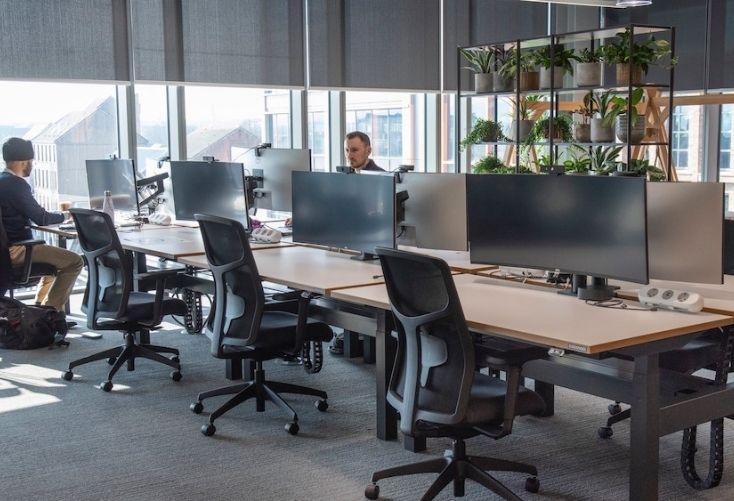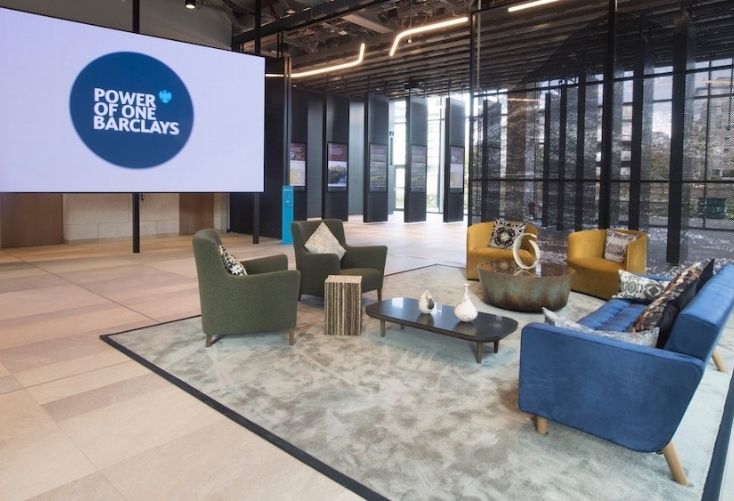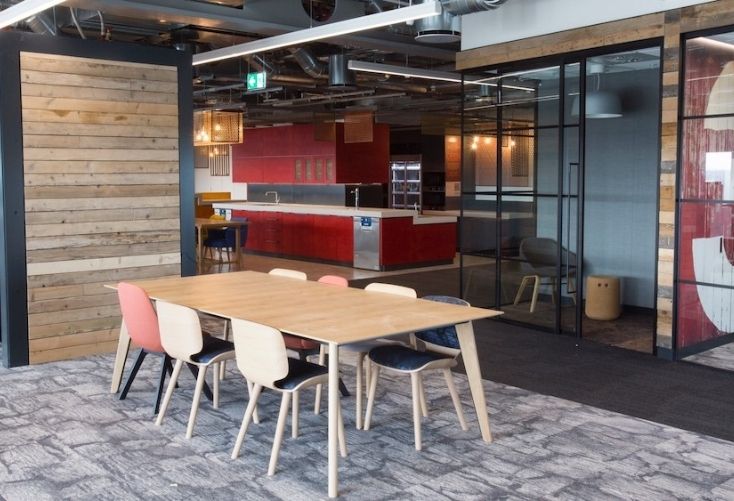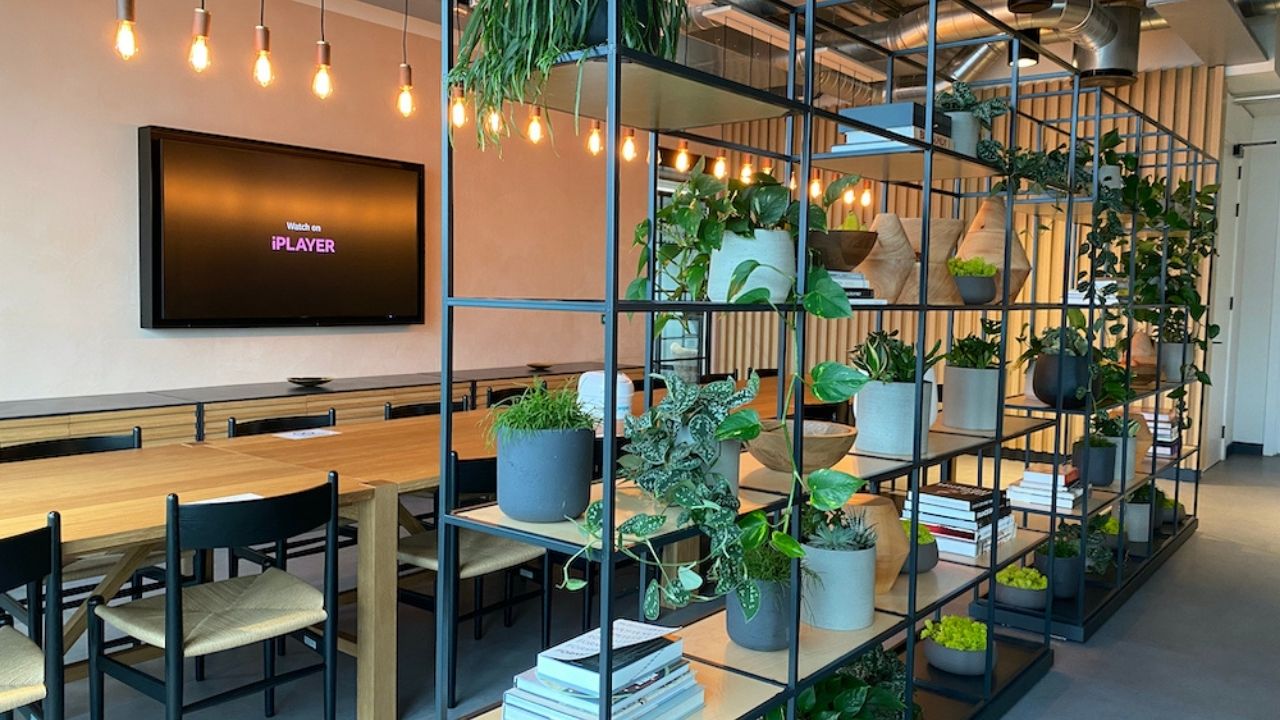- Workspaces have been primarily designed by, and for, neurotypical people. How can workspaces better meet the needs of neurodivergent people – such as those with hypersensitivity to sound, light, or smell?
- Agile and flexible working spaces, particularly now with hybrid working, present challenges where the level of noise is unpredictable – and this can impact neurodivergent employees.
- Motionspot’s Jason Slocombe explores how workplaces can be designed to better meet the needs of neurodivergent employees. One example is separation zoning using natural material screens, moveable furniture, and adjustable blinds.
This article was written by Jason Slocombe and was originally published on Work Design Magazine.
One in five British people are disabled, and while most building regulations focus on physical access, for wheelchair users in particular, only 8% of these 14.1 million disabled people actually use a wheelchair, meaning that the needs of the remaining 92% are potentially not being met by the built environment. Narrowing this to the workplace, the ONS’s pre-pandemic employment statistics show that only 22% of approximately 450,000 autistic adults in the UK were in paid work in this period compared to 53% of all disabled adults and 81.0% of non-disabled adults, showing that autistic people are clearly underrepresented in the workplace (Office for National Statistics, 2022).
Autism is one form of neurological difference which comes under the umbrella of neurodiversity, which refers to the different ways the brain can work and interpret information, highlighting that there are many ways of thinking, sensing, and interacting with the world. Historically, the spaces which make up the built environment have been primarily designed by and for neurotypical people. This poses a range of challenges for neurodivergent employees, such as hypersensitivity to sound and smell making an overcrowded kitchen area thrumming with lunchtime chatter and music highly unpleasant, and certain aromas making someone feel physically sick. It is worth noting that the diversity of experiences within the neurodiverse spectrum is huge because neurodiversity is not just about neurological difference, it also impacts physical, sensory, social interaction, communication, wellbeing, cultural and gender needs and mental health, all of which are directly impacted by the way spaces are designed and managed. So, how can they be designed to better meet the needs of neurodivergent people?
Firstly, it is worth spending a moment on the question of why employers should want to employ neurodivergent people. Beyond just ticking a DE&I box, research shows that neurodivergent employees bring valuable strengths to the workplace, including, but not limited to understanding complex systems, independently focussing on tasks, reliability and loyalty, all of which combine to provide a good business case for employing and retaining neurodivergent employees. There is also a school of thought which says that for organisations to create and deliver truly inclusive technology, products, policies and so on, they need to have representatives from all minority groups as well as intersections between groups within their workforce.

Accessibility, interaction and friction
In her book ‘Mismatch: How Inclusion Shapes Design’, Kat Holmes describes exclusion as a mismatch between human interaction and the built environment (Holmes, 2018). If this concept is extended to accessibility which commonly identifies barriers, the fiction that makes interactions difficult or undesirable must also be looked at, and friction is a sure-fire way to slow down innovation, momentum, and positive change for both individuals and organisations. One aspect of this is sensory accessibility which deals with sensory interaction such as light, sound, touch, taste, smell and so on, as well as the vestibular and proprioceptive senses which involve balance and body awareness in space, and inward-facing interoceptive senses which are our perception or sensation of internal states such as time passing, thermal regulation and even gut feeling.
In contemporary workspace design it is often a desirable quality to have a lively and energetic space that increases engagement and social interaction. There are obvious benefits to this approach for some people, but awareness of how the sensory environment impacts neurodivergent employees needs to be considered. There is a misconception that neurodivergent people are just sensitive, but it’s much more complex than that. Differences in hyper and hyposensitivity occur in different senses in different people (Elwin et al. 2013), meaning that it can be a real challenge to find the right balance, and mismatches of reactivity and environment are common.

Acoustic environment
Top of the list in sensory design is unsurprisingly noise, which can be a real problem for neurodivergent people in modern offices, partly because of the trend towards open plan layouts, but also because of increasing occupant density (pre-pandemic at least) and mixing functions with different sensory profiles, such as eating areas near focussed workspaces. Agile and flexible working spaces, particularly now, with hybrid working, also present challenges where the level of noise might be unpredictable in a space at any one given time.
Many neurotypical people prefer a quiet space to carry out really focussed thinking and work, but the studies that show a correlation between noise and poor concentration and cognitive performance rarely include neurodivergent employees, so what is considered ‘acceptable’ is based on studies of neurotypical subjects only. This means that for someone with an auditory processing sensitivity, these ‘acceptable’ standards can make a workplace unworkable.
Noise is often dealt with as a mitigation strategy in the later stages of the design process, but this is not the ideal solution for reducing noise. Instead, dealing with noise at concept stage by using separation zoning is a more effective approach. For example, acoustic panels can be used to create quiet zones, but some types can increase volatile organic compounds (VOCs) emissions which include a variety of chemicals which can be particularly problematic for neurodivergent groups who commonly report chemical sensitivity. In this case natural material screens such as cork, petrified moss, timber, felt, and large planters are a good option. As with all good inclusive design, these not only function for minority groups, but also deliver a strong aesthetic which improves the experience of using the space for everyone. Also consider how people might be able to recalibrate from busy spaces by including Sensory Rooms containing moveable furniture, adjustable blinds, lighting and temperature controls into the overall design.

Reduce visual noise
Another important sensory consideration is visual noise and how information is perceived though our eyes. Patterns are used extensively in spaces to create character, interest, and liveliness, with organisations regularly investing huge sums into branding which they then want incorporated into their workplaces. However, some patterns can be a problem for neurodivergent people. At the extreme end high contrast stripes and geometric patterns can create acute sensory overload particularly for people with visual sensitivities, epilepsy, or migraine sufferers.
If you consider that humans evolved in natural landscapes, meaning that our eyes process natural forms most efficiently, the idea that some complex patterns in the built environment require higher metabolic bandwidth to process, which is uncomfortable and tiring, starts to make sense (Le et al., 2017). This is one of the key reasons why access to views of nature have a calming and regenerative effect and are therefore incorporated into the design of most internal spaces. Research using image analysis techniques on people’s responses to commercial flooring patterns typically found in offices have shown some have negative effects, but to a greater degree for neurodivergent employees. Natural materials and forms that typically contain low levels of visual noise are therefore a much better option as they are easier for the brain to process, making using the space much easier and more enjoyable to use for everyone (Wilkins, Penacchio and Leonards, 2018).
One area which is rarely addressed, even in the inclusive design community is how the senses work together, for example, a loud environment can affect the proprioceptive senses. This might impact someone’s balance and depth perception, and therefore their capacity to exit a building safely in the event of a fire when the sound of the alarms would be very loud. This is also why it is recommended that stairs and walkways have a low sensory environment.

What makes a good desk space?
The question of what makes a good desk space for autistic people is an interesting one from a sensory perspective. Firstly, sitting at your desk with your back to open areas makes it difficult to see and locate what is behind you, and this can raise both sensitivity and anxiety, especially for people who would find an unexpected touch or social interaction a painful or unpleasant experience.
Beyond desk positioning, ergonomic factors should also be considered alongside sensory differences. As the senses are connected, moving and the sense of movement, such as rocking, is a common strategy used by autistic people and those with ADHD and dyspraxia to regulate their senses and anxiety levels. When viewed as a natural and healthy coping mechanism, it is encouraged that furniture such as desk seating should accommodate movement as well as being a supportive place to sit. Options include leg hammocks, wobble chairs, swings, and even chairs that reconfigure to allow several ways of sitting (National Autistic Society, 2022). Ultimately, a good desk space for an autistic person is the one that they feel most comfortable in, making it vital to be able to offer choice and a range of seating for the different sensory profiles of staff members.
Designing inclusively for a neurodiverse workforce starts and ends with an engagement process to understand neurodivergent experiences, in all their nuances and what is needed to design a welcoming environment for all. Decision makers and designers should listen to people with a lived experience as part of an active process and involve the very people who will be most impacted by the design choices as co-designers. Creating inclusive workplaces that consider neurodivergence and enable neurodivergent employees to be retained and thrive at work, will result in a more diverse, creative, and rich environment that benefits everyone.


 Dr. Gleb Tsipursky – The Office Whisperer
Dr. Gleb Tsipursky – The Office Whisperer Nirit Cohen – WorkFutures
Nirit Cohen – WorkFutures Angela Howard – Culture Expert
Angela Howard – Culture Expert Drew Jones – Design & Innovation
Drew Jones – Design & Innovation Jonathan Price – CRE & Flex Expert
Jonathan Price – CRE & Flex Expert













